Tommi Mikkonen
Reconsidering Requirements Engineering: Human-AI Collaboration in AI-Native Software Development
Oct 05, 2025Abstract:Requirement Engineering (RE) is the foundation of successful software development. In RE, the goal is to ensure that implemented systems satisfy stakeholder needs through rigorous requirements elicitation, validation, and evaluation processes. Despite its critical role, RE continues to face persistent challenges, such as ambiguity, conflicting stakeholder needs, and the complexity of managing evolving requirements. A common view is that Artificial Intelligence (AI) has the potential to streamline the RE process, resulting in improved efficiency, accuracy, and management actions. However, using AI also introduces new concerns, such as ethical issues, biases, and lack of transparency. This paper explores how AI can enhance traditional RE practices by automating labor-intensive tasks, supporting requirement prioritization, and facilitating collaboration between stakeholders and AI systems. The paper also describes the opportunities and challenges that AI brings to RE. In particular, the vision calls for ethical practices in AI, along with a much-enhanced collaboration between academia and industry professionals. The focus should be on creating not only powerful but also trustworthy and practical AI solutions ready to adapt to the fast-paced world of software development.
* Accepted at SEAA 2025. Appearing in Springer LNCS 16081, pages 164-180
Urban Air Mobility as a System of Systems: An LLM-Enhanced Holonic Approach
May 01, 2025Abstract:Urban Air Mobility (UAM) is an emerging System of System (SoS) that faces challenges in system architecture, planning, task management, and execution. Traditional architectural approaches struggle with scalability, adaptability, and seamless resource integration within dynamic and complex environments. This paper presents an intelligent holonic architecture that incorporates Large Language Model (LLM) to manage the complexities of UAM. Holons function semi autonomously, allowing for real time coordination among air taxis, ground transport, and vertiports. LLMs process natural language inputs, generate adaptive plans, and manage disruptions such as weather changes or airspace closures.Through a case study of multimodal transportation with electric scooters and air taxis, we demonstrate how this architecture enables dynamic resource allocation, real time replanning, and autonomous adaptation without centralized control, creating more resilient and efficient urban transportation networks. By advancing decentralized control and AI driven adaptability, this work lays the groundwork for resilient, human centric UAM ecosystems, with future efforts targeting hybrid AI integration and real world validation.
LLM-Ehnanced Holonic Architecture for Ad-Hoc Scalable SoS
Jan 14, 2025



Abstract:As modern system of systems (SoS) become increasingly adaptive and human centred, traditional architectures often struggle to support interoperability, reconfigurability, and effective human system interaction. This paper addresses these challenges by advancing the state of the art holonic architecture for SoS, offering two main contributions to support these adaptive needs. First, we propose a layered architecture for holons, which includes reasoning, communication, and capabilities layers. This design facilitates seamless interoperability among heterogeneous constituent systems by improving data exchange and integration. Second, inspired by principles of intelligent manufacturing, we introduce specialised holons namely, supervisor, planner, task, and resource holons aimed at enhancing the adaptability and reconfigurability of SoS. These specialised holons utilise large language models within their reasoning layers to support decision making and ensure real time adaptability. We demonstrate our approach through a 3D mobility case study focused on smart city transportation, showcasing its potential for managing complex, multimodal SoS environments. Additionally, we propose evaluation methods to assess the architecture efficiency and scalability,laying the groundwork for future empirical validations through simulations and real world implementations.
GPT versus Humans: Uncovering Ethical Concerns in Conversational Generative AI-empowered Multi-Robot Systems
Nov 21, 2024



Abstract:The emergence of generative artificial intelligence (GAI) and large language models (LLMs) such ChatGPT has enabled the realization of long-harbored desires in software and robotic development. The technology however, has brought with it novel ethical challenges. These challenges are compounded by the application of LLMs in other machine learning systems, such as multi-robot systems. The objectives of the study were to examine novel ethical issues arising from the application of LLMs in multi-robot systems. Unfolding ethical issues in GPT agent behavior (deliberation of ethical concerns) was observed, and GPT output was compared with human experts. The article also advances a model for ethical development of multi-robot systems. A qualitative workshop-based method was employed in three workshops for the collection of ethical concerns: two human expert workshops (N=16 participants) and one GPT-agent-based workshop (N=7 agents; two teams of 6 agents plus one judge). Thematic analysis was used to analyze the qualitative data. The results reveal differences between the human-produced and GPT-based ethical concerns. Human experts placed greater emphasis on new themes related to deviance, data privacy, bias and unethical corporate conduct. GPT agents emphasized concerns present in existing AI ethics guidelines. The study contributes to a growing body of knowledge in context-specific AI ethics and GPT application. It demonstrates the gap between human expert thinking and LLM output, while emphasizing new ethical concerns emerging in novel technology.
Holon Programming Model -- A Software-Defined Approach for System of Systems
Oct 23, 2024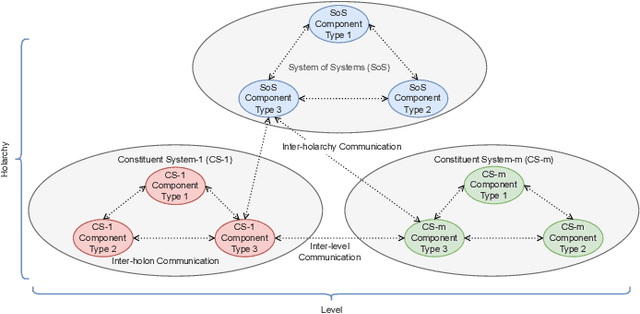
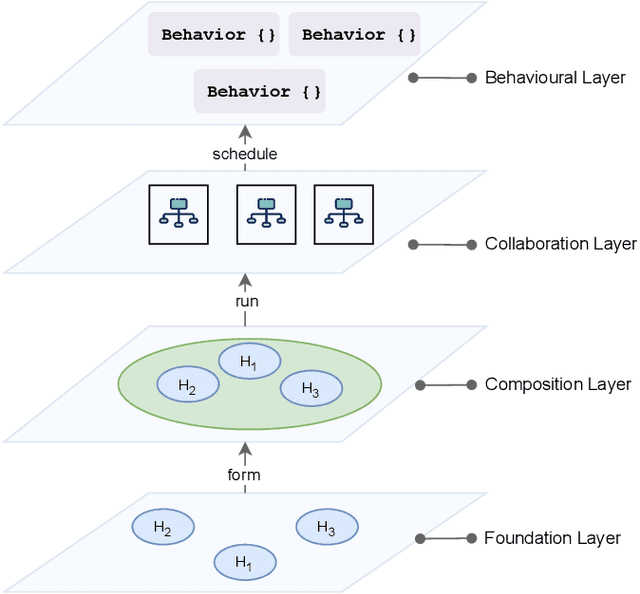


Abstract:As Systems of Systems evolve into increasingly complex networks, harnessing their collective potential becomes paramount. Traditional SoS engineering approaches lack the necessary programmability to develop third party SoS level behaviors. To address this challenge, we propose a software defined approach to enable flexible and adaptive programming of SoS. We introduce the Holon Programming Model, a software-defined framework designed to meet these needs. The Holon Programming Model empowers developers to design and orchestrate complex system behaviors effectively, as illustrated in our disaster management scenario. This research outlines the Holon Programming Model theoretical underpinnings and practical applications, with the aim of driving further exploration and advancement in the field of software defined SoS
6GSoft: Software for Edge-to-Cloud Continuum
Jul 09, 2024Abstract:In the era of 6G, developing and managing software requires cutting-edge software engineering (SE) theories and practices tailored for such complexity across a vast number of connected edge devices. Our project aims to lead the development of sustainable methods and energy-efficient orchestration models specifically for edge environments, enhancing architectural support driven by AI for contemporary edge-to-cloud continuum computing. This initiative seeks to position Finland at the forefront of the 6G landscape, focusing on sophisticated edge orchestration and robust software architectures to optimize the performance and scalability of edge networks. Collaborating with leading Finnish universities and companies, the project emphasizes deep industry-academia collaboration and international expertise to address critical challenges in edge orchestration and software architecture, aiming to drive significant advancements in software productivity and market impact.
Business and ethical concerns in domestic Conversational Generative AI-empowered multi-robot systems
Jan 12, 2024



Abstract:Business and technology are intricately connected through logic and design. They are equally sensitive to societal changes and may be devastated by scandal. Cooperative multi-robot systems (MRSs) are on the rise, allowing robots of different types and brands to work together in diverse contexts. Generative artificial intelligence has been a dominant topic in recent artificial intelligence (AI) discussions due to its capacity to mimic humans through the use of natural language and the production of media, including deep fakes. In this article, we focus specifically on the conversational aspects of generative AI, and hence use the term Conversational Generative artificial intelligence (CGI). Like MRSs, CGIs have enormous potential for revolutionizing processes across sectors and transforming the way humans conduct business. From a business perspective, cooperative MRSs alone, with potential conflicts of interest, privacy practices, and safety concerns, require ethical examination. MRSs empowered by CGIs demand multi-dimensional and sophisticated methods to uncover imminent ethical pitfalls. This study focuses on ethics in CGI-empowered MRSs while reporting the stages of developing the MORUL model.
Towards Human-Bot Collaborative Software Architecting with ChatGPT
Feb 26, 2023



Abstract:Architecting software-intensive systems can be a complex process. It deals with the daunting tasks of unifying stakeholders' perspectives, designers' intellect, tool-based automation, pattern-driven reuse, and so on, to sketch a blueprint that guides software implementation and evaluation. Despite its benefits, architecture-centric software engineering (ACSE) inherits a multitude of challenges. ACSE challenges could stem from a lack of standardized processes, socio-technical limitations, and scarcity of human expertise etc. that can impede the development of existing and emergent classes of software (e.g., IoTs, blockchain, quantum systems). Software Development Bots (DevBots) trained on large language models can help synergise architects' knowledge with artificially intelligent decision support to enable rapid architecting in a human-bot collaborative ACSE. An emerging solution to enable this collaboration is ChatGPT, a disruptive technology not primarily introduced for software engineering, but is capable of articulating and refining architectural artifacts based on natural language processing. We detail a case study that involves collaboration between a novice software architect and ChatGPT for architectural analysis, synthesis, and evaluation of a services-driven software application. Preliminary results indicate that ChatGPT can mimic an architect's role to support and often lead ACSE, however; it requires human oversight and decision support for collaborative architecting. Future research focuses on harnessing empirical evidence about architects' productivity and exploring socio-technical aspects of architecting with ChatGPT to tackle emerging and futuristic challenges of ACSE.
Continuous Design Control for Machine Learning in Certified Medical Systems
Sep 13, 2022



Abstract:Continuous software engineering has become commonplace in numerous fields. However, in regulating intensive sectors, where additional concerns needs to be taken into account, it is often considered difficult to apply continuous development approaches, such as devops. In this paper, we present an approach for using pull requests as design controls, and apply this approach to machine learning in certified medical systems leveraging model cards, a novel technique developed to add explainability to machine learning systems, as a regulatory audit trail. The approach is demonstrated with an industrial system that we have used previously to show how medical systems can be developed in a continuous fashion.
Testing the Robustness of AutoML Systems
May 06, 2020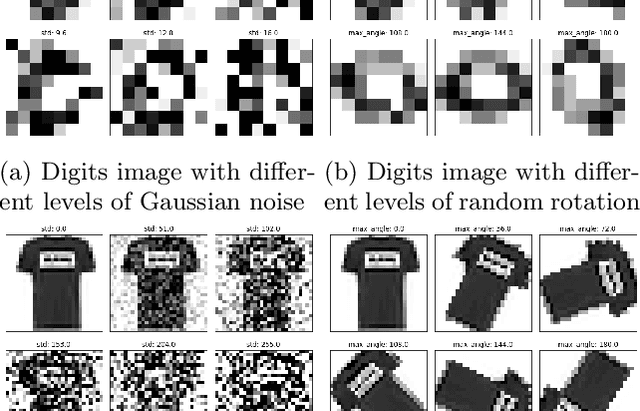

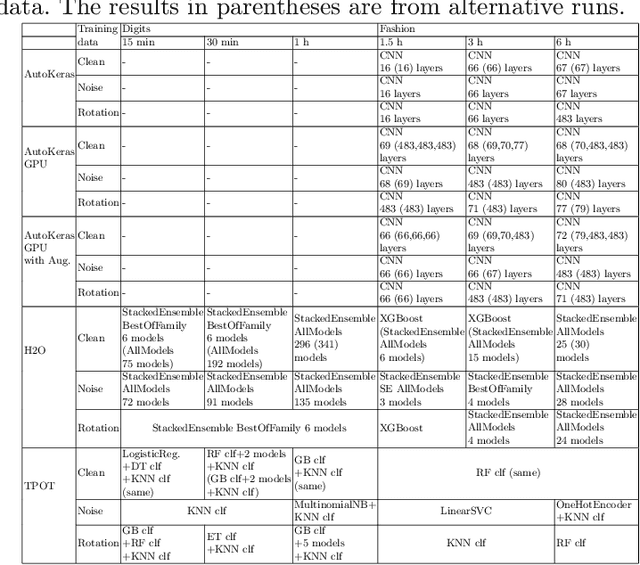
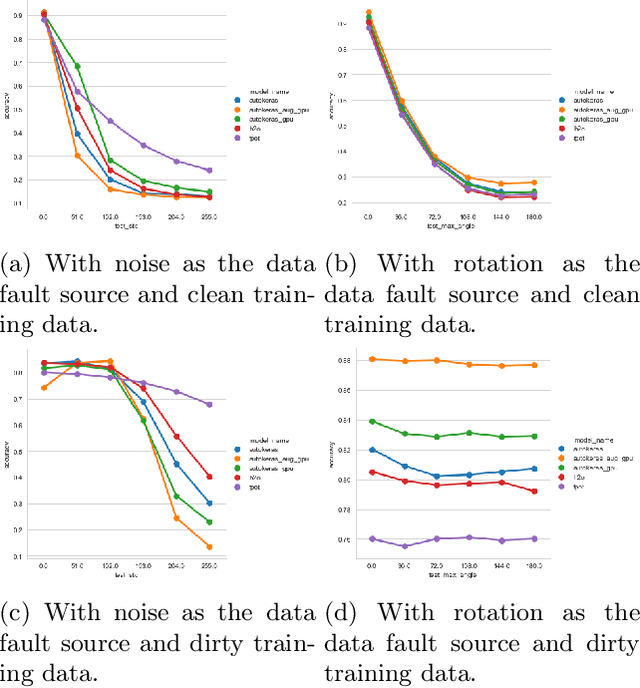
Abstract:Automated machine learning (AutoML) systems aim at finding the best machine learning (ML) pipeline that automatically matches the task and data at hand. We investigate the robustness of machine learning pipelines generated with three AutoML systems, TPOT, H2O, and AutoKeras. In particular, we study the influence of dirty data on the accuracy, and consider how using dirty training data may help to create more robust solutions. Furthermore, we also analyze how the structure of the generated pipelines differs in different cases.
 Add to Chrome
Add to Chrome Add to Firefox
Add to Firefox Add to Edge
Add to Edge